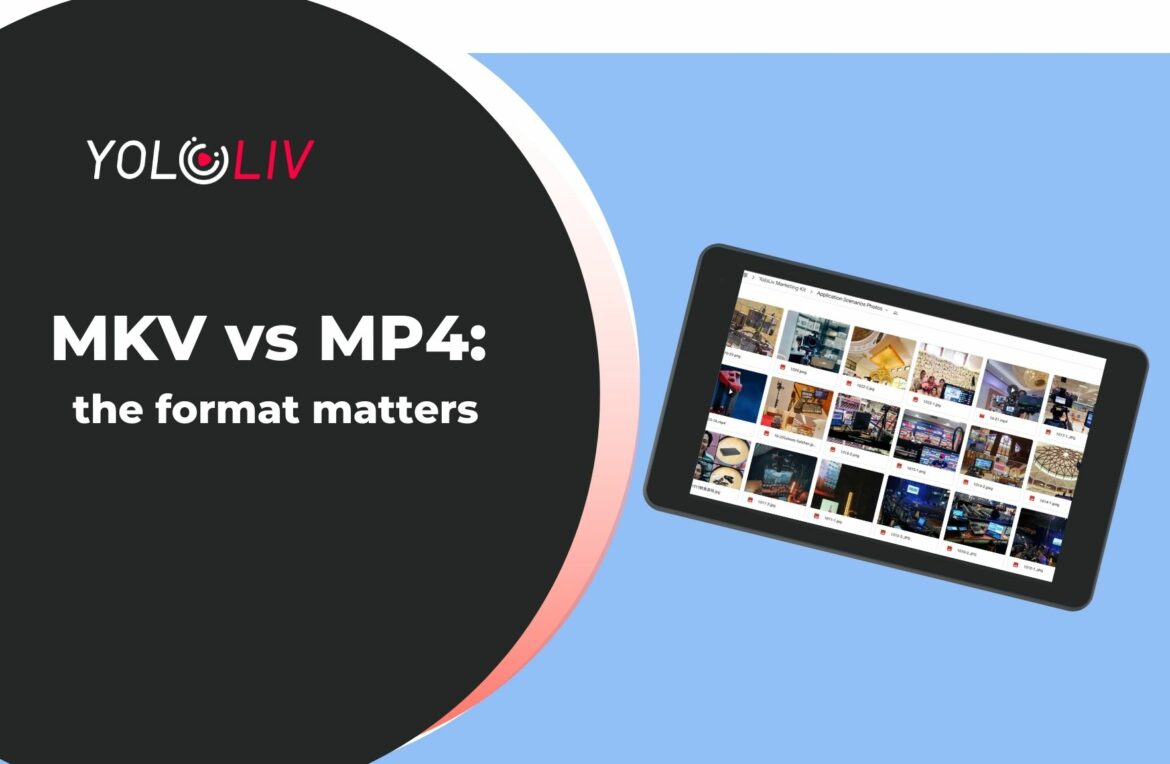When it comes to video streaming, choosing the right format for your videos is crucial. The format you choose can impact the quality, compatibility, and efficiency of your video streams. People often compare two popular video formats for video streaming are Matroska Video (MKV) and MPEG-4 (MP4). In this article, we will compare MKV and MP4 for video streaming, examining their features, advantages, and limitations.
MKV: What You Need to Know
MKV, short for Matroska Video, is a popular container format for multimedia content. It is an open-source format that supports a wide range of video and audio codecs, subtitles, and metadata. MKV files can contain multiple audio tracks, video tracks, and subtitle tracks, making it a versatile format for multimedia content.
One of the key features of MKV is its support for high-quality video and audio. MKV files can store videos with high resolution, such as 4K or even 8K, and can also support lossless audio codecs, making it suitable for preserving the original quality of videos during streaming. Additionally, MKV files can contain advanced features such as chapter markers, which allow users to navigate easily through the video content.
Another advantage of MKV is its support for subtitles. MKV files can store multiple subtitle tracks in different languages, making it convenient for international audiences. We can display the subtitles during video playback, allowing viewers to enjoy videos in their preferred language.
However, there are some limitations to using MKV for video streaming. One limitation is the compatibility of MKV files with some devices and platforms. Many media players support MKV and streaming devices, there are some devices and platforms that may not fully support MKV files, requiring additional codecs or software for playback. Additionally, MKV files tend to have larger file sizes compared to other video formats, which may impact the efficiency of video streaming, especially in situations with limited bandwidth.

MP4: What You Need to Know
MP4, short for MPEG-4, is a popular video format that is widely used for video streaming. It is a container format that is compatible with a wide range of devices and platforms, making it a popular choice for online video streaming services.
One of the key advantages of MP4 is its widespread compatibility. MP4 files can be played on most media players, streaming devices, and platforms, including smartphones, tablets, computers, smart TVs, and gaming consoles. This makes MP4 a versatile format for delivering video content to a wide audience.
MP4 files also tend to have smaller file sizes compared to MKV files, making them more efficient for video streaming, especially in situations with limited bandwidth. This can result in faster video load times and smoother playback, which can enhance the overall streaming experience for viewers.
Another advantage of MP4 is its support for digital rights management (DRM). MP4 files can be encrypted with DRM to protect copyrighted content from unauthorized copying or distribution, making it a suitable choice for delivering premium video content that requires copyright protection.
However, MP4 has some limitations as well. One limitation is its support for video and audio codecs. While MP4 supports a wide range of codecs, it may not support all the advanced MKV support codecs, which may impact the quality of video and audio during streaming. Additionally, MP4 files may not support advanced features such as chapter markers or multiple subtitle tracks, which may limit the interactive capabilities of video content.
Choosing the Right Format for Video Streaming
When it comes to choosing the right format for video streaming, there are several factors to consider. Here are some key considerations when comparing MKV and MP4:
- Quality: If preserving the original quality of
the videos is a top priority, MKV may be a better choice. MKV files support high-resolution videos and lossless audio codecs, making them suitable for delivering premium video content with superior quality.
- Compatibility: If you need your videos to be accessible on a wide range of devices and platforms without the need for additional codecs or software, MP4 may be a more compatible choice. Most media players, streaming devices, and platforms support MP4 filesmaking them accessible to a larger audience.
- Efficiency: If efficient video streaming is important, MP4 may be a better option. MP4 files tend to have smaller file sizes compared to MKV files, resulting in faster video load times and smoother playback, especially in situations with limited bandwidth.
- Features: If you require advanced features such as chapter markers, multiple subtitle tracks, or interactive capabilities, MKV may be a preferable choice. MKV files support advanced features that enhance the interactive capabilities of video content, providing a more engaging viewing experience.
- DRM: If you need to protect copyrighted content from unauthorized copying or distribution, MP4 may be a suitable choice. MP4 files can be encrypted with DRM, providing copyright protection for premium video content.
Conclusion
In conclusion, both MKV and MP4 have their advantages and limitations for video streaming. MKV is famous for its support for high-quality video and audio, advanced features, and subtitle capabilities. On the other hand, MP4 is widely compatible, efficient for streaming, and supports DRM for copyright protection. When choosing between MKV and MP4, consider your specific requirements for video quality, compatibility, efficiency, features, and DRM protection to make an informed decision that best suits your video streaming needs. YoloCast would be an excellent helper for live streams.
In summary, the choice between MKV and MP4 for video streaming depends on your specific needs and priorities. If video quality and advanced features are crucial, MKV may be a better option. If compatibility, efficiency, and DRM are more important, MP4 may be the preferred choice. Understanding the features, advantages, and limitations of both formats will help you make an informed decision to optimize your video streaming experience.
31,397 total views, 3 views today

Aura, the marketing specialist at YoloLiv. With her extensive work experience and motivated work attitude, she continually encourages user issue solutions and feature request fulfillment in order to satisfy the demands of more people.


